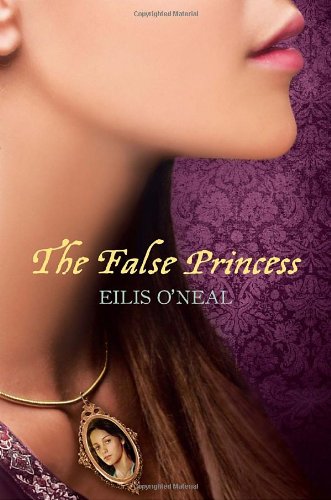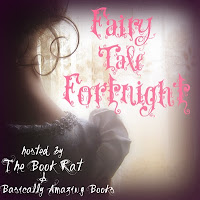~*~*~*~*~*~*~*~*~*~*~*~*~*~*~
1) What were your favorite fairy tales growing up? What drew you to them?
I loved Beauty and the Beast and The Snow Queen. The first because I liked the fact that Beauty saw through the Beast’s exterior to his inner self, and the second for its atmosphere. And, though I wouldn’t call it one of my favorites, I had a very strong reaction to Bluebeard. We had a book of one-hundred fairy tales, which my mother would read to me from, one a night, and I don’t think I slept for two nights after hearing Bluebeard for the first time. I can still recall the picture that went with it of the wife opening the door, and it still makes me shiver. It frightened me and creeped me out, and I would read it whenever I wanted a good scare.
2) Did any fairy tales influence you when writing THE FALSE PRINCESS?
In a way, you could say that all the fairy tales in which common girls either become princesses or in which princess are raised in obscurity as common girls influenced The False Princess. Cinderella and Sleeping Beauty are probably the two most famous of these types of fairy tale, though they certainly aren’t alone. Having grown up with their stories and having had them in my imagination for so long is part of what made me ask the question that lead to The False Princess: What if you grew up thinking you were a princess and then found out you weren’t? I wouldn’t have gotten to this reversal without first having read it the other way around.
3) Was it hard coming up with your own lore when you began world-building for TFP? How did you bring everything together?
It’s always such a balance when you’re world-building. With The False Princess, there are quite a few elements of the world—the oracle of the Nameless God, the way magic works, the tension between commoners and nobles—that are essential to the plot. The reader needs to understand them and how they work to really get into the book. But TFP also has heavy doses of mystery, adventure, and romance, and so the pacing has to move along at a pretty good clip. So it was sometimes a challenge to balance fleshing out the world and its rules and keeping the book moving. I want the information to be there, but in a way that feels natural and keeps the book going, rather than a ten page diatribe on exactly how magic functions in Thorvaldor. So that was what I tried to concentrate on: getting the needed information into the book in a natural way.

4) What are some of your favorite fairy tale inspired novels and/or authors?
I love Robin McKinley’s Beauty—I’m still so jealous of the Beast’s library in that book, which contains books that haven’t been written in Beauty’s time. Edith Pattou’s East, which retells East of the Sun, West of the Moon, has a prime place on my fairy tale shelf. Terri Windling and Ellen Datlow’s anthologies of fairy tale retellings (the first one is Snow White, Blood Red) are must-reads. Shannon Hale’s The Goose Girl is a favorite, and recently, I’ve gotten really attached to Malinda Lo’s ASH, which is a very powerful and wonderfully written twist on Cinderella.
5) If you could live out any fairy tale, what would it be and why?
Probably Beauty and the Beast. It has so many elements that appeal to me: the enchanted castle, the mysterious curse, the slow building of trust and love between two people. And, of course, in many modern retellings, a girl who loves books!
6) Will you be writing any more novels that read like something out of a fairy tale? Can you tell us anything about your upcoming work?
I think so. It’s a feeling that I love in other books, and one that I like to cultivate in my own work. I’d like to do an actual fairy tale retelling myself someday—I just have to figure out which fairy tale I want to do most!
As for what I’m working on now, it has a bit of a more modern feel than TFP or many fairy tales, though by “modern,” I mean Regency England. Still, there are some definite fairy tale tropes in it. I’m going to be coy and not say much more than that, as these are still early days, and I tend to lose momentum if I talk about works in progress too much.
7) What's your favorite Disney rendition of a fairy tale? What makes it so special?
I feel a little like a broken record, but I would have to say Beauty and the Beast. It came out when I was in 6th grade and having a really hard time socially. I felt very alienated from kids my own age, and I spent a lot of time alone with my books. So to see a girl who loved to read and who was considered odd by the people around her be strong, fall in love, and have someone fall in love with her meant a lot to me.
~*~*~*~*~*~*~*~*~*~*~*~*~*~*~
We want to thank Bonnie for sending this interview our way for FTF, and thank Eilis for stopping by and chatting! Make sure to leave them some comment love!



Ooh, another one to add to my list! I'm seriously loving all these fantastic FTF reads!
ReplyDeleteI had no idea Cinderella and Sleeping Beauty influenced this one, but I find that so intriguing. Thanks for sharing!
ReplyDelete